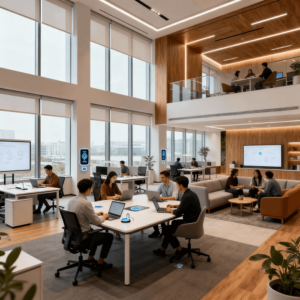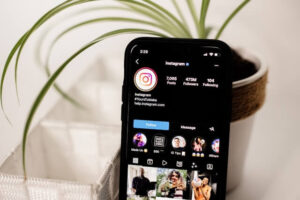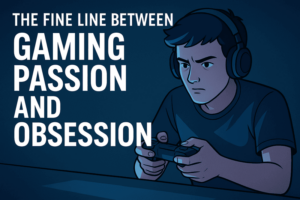Workplaces and homes are saturated with flat boards that force our bodies to adapt – craned necks, awkward reaches, and edge glare that kills visibility. Anatoliy Telbukh, CEO at TCO, set out to flip that equation with the AnatomiQ Curved Board: a human-centered surface that aligns with how we actually look, reach, and collaborate. Recognized as a Red Dot Design Winner, the concept blends form and function into a tool that is immediately comfortable, highly legible from wide angles, and quietly premium in daily use.
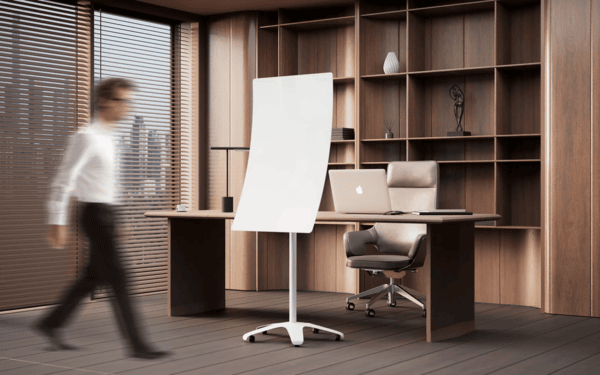
Table of Contents
Profile – Who is Anatoliy Telbukh?
CEO at TCO – Mission and leadership focus
Anatoliy leads TCO with a simple mission: make everyday visual tools feel natural to use. His direction emphasizes ergonomics, visual clarity, and durability so teams can think out loud on a surface that keeps up with them – not the other way around.
Design ethos – Human factors, clarity, and durability
Every design decision begins with anatomy and ends with longevity. Curvature serves posture, low-gloss finishes serve visibility, and robust materials serve years of hard use. The result is a board that is easy to write on, easy to read, and easy to keep looking new.
Origin Story – From problem to prototype
The pain points of flat boards
Flat boards demand that you tilt your head, stretch your shoulder, and accept that off-axis notes will be hard to read. In small rooms or hybrid meetings, edge content often disappears into glare or distortion.
First principles – Anatomy, sightlines, and collaboration
The brief was straightforward: match the board’s geometry to human movement and natural sightlines. A gentle radius keeps the center slightly closer to the eye, brings far edges into view, and supports shoulder-led writing arcs that reduce wrist strain.
The AnatomiQ Curved Board – What it is and why it works
Form factor – Curvature, materials, finishes
The surface uses a subtle, consistent radius that preserves straight lines on the page while improving comfort and readability. Finishes range from premium glass to durable ceramic steel and refined laminates – all tuned for easy cleaning and low ghosting.
Ergonomic gains – Posture, reach, and eye line
The curve nudges posture into a neutral zone. You reach less, crane less, and write with arm motion instead of wrist torque. Over a 30-minute stand-up or a two-hour workshop, that means less fatigue and cleaner handwriting.
Visibility & flow – Wide-angle readability and quicker alignment
Curvature smooths edge glare and brings peripheral content toward viewers. In practice, people stop moving their bodies to read the board – they just keep the conversation going. Fewer “what does that say?” interruptions means faster alignment.
Recognition & Credibility
Red Dot Design Winner – What the jury recognized
The Red Dot jury rewards solutions where aesthetics elevate everyday function. AnatomiQ stands out because the form is a direct response to human factors – the curve is not a styling flourish but the working principle.
Pilots and market validation – From studios to meeting rooms
Early deployments across compact huddle rooms, open collaboration bays, home offices, and creative studios revealed consistent themes: shorter meetings, less visual confusion at the edges, and more participation from people seated off-center.
Licensing Strategy – How partners benefit
International licensing – Territories, categories, and exclusivity
TCO offers structured licensing for manufacturers and distributors who want to bring the curved form factor to local markets. Agreements may include territory definitions, category carve-outs, and time-boxed exclusivity aligned to performance.
Support package – Documentation, production, scaling
Partners receive product specifications, mounting standards, finish guidelines, and packaging templates – plus advisory support on production scaling, QA, and aftercare. The goal is consistent experience at global scale.
Use Cases – Home and office scenarios
Home – Family planning, creative corners, study zones
At home, the board becomes a calm command center. Weekly schedules, meal plans, chore rosters, and creative sketches remain readable from kitchen islands or hallway angles. For makers, the curvature supports large gestural marks without wrist fatigue.
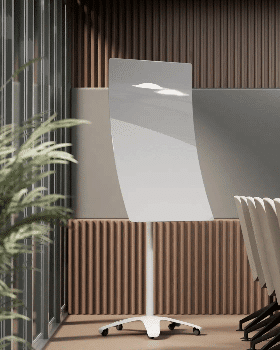
Office – Stand-ups, roadmaps, client rooms
In offices, the board turns quick updates into true stand-ups. Roadmaps curve toward the team, status tags stay legible from the sides, and client sessions feel more polished thanks to the premium form and low-glare readability.
Implementation Guide – Selecting size, finish, and placement
Sizing & mounting – Heights, standoffs, and lighting
- Size: Compact boards suit phone booths and home desks; midsize boards anchor huddle rooms; large boards serve project bays and training spaces.
- Height: Aim the midpoint at average eye level – bias slightly lower for mixed-height teams.
- Mounting: Use approved standoffs and anchors; leave 90–120 cm of stand-off space so people can write comfortably.
- Lighting: Cross-light from the side opposite the writing hand; avoid hard down-lights aimed at the center.
Care & cleaning – Ghosting prevention and upkeep
Dry-wipe daily with microfiber. Wet-clean weekly with alcohol-free solutions. Use low-odor, non-permanent markers and store them tip-down. Avoid abrasives and tapes that leave residue.
Results – Before/after snapshots and stakeholder feedback
Collaboration speed – Shorter meetings, clearer decisions
Teams report fewer clarification pauses and faster convergence in planning sessions. Off-axis viewers can track edge content without repositioning – momentum stays high.
Well-being – Reduced strain and increased adoption
People naturally stand a bit longer at the board and hand off the pen more often. Less neck tilt and shoulder shrug translates into easier participation and better handwriting late in the session.
Roadmap – Future variants and integrations
Accessories – Grids, trays, magnetic options
Expect modular trays, magnetic rulers, reusable grid overlays, and color-coded tags that snap on cleanly without visual clutter.
Digital workflows – Capture, sync, and hybrid rooms
While the board thrives as a physical focus, many teams pair it with quick capture – scan and sync to project tools – or place it opposite a camera for hybrid meetings where legibility still matters.
About TCO – Company overview and values
TCO designs ergonomic, durable tools that make shared thinking effortless. The company champions human-centered geometry, premium materials, and responsible manufacturing – because everyday objects should be both delightful and dependable.
FAQs
Does the curve distort writing or drawings?
No – the radius is deliberately gentle, so you still write on a flat marker path while benefitting from improved sightlines and reach.
What sizes and finishes are available?
Configurations typically span compact to large formats with finish options such as ceramic steel, refined laminates, and premium glass. Choose low-gloss surfaces for photography and video calls.
Is it suitable for small rooms and hybrid meetings?
Yes – the curve improves off-axis readability and reduces glare, which helps in tight rooms and on camera.
How difficult is installation?
Mounting is straightforward with supplied standoffs and anchors. Follow wall type guidance and leave adequate front clearance for comfortable writing.
What maintenance is required?
Daily dry-wipe, weekly wet-clean, and basic marker care. Avoid abrasives and harsh solvents to preserve finish quality.
Conclusion – A new standard for visual communication
The AnatomiQ Curved Board shows how a small geometric shift can produce outsized results. By aligning the surface with human posture and sightlines, it makes writing easier, reading clearer, and collaboration faster. Anatoliy Telbukh and TCO aren’t adapting an old tool – they are setting a new standard that feels right from the first stroke.


